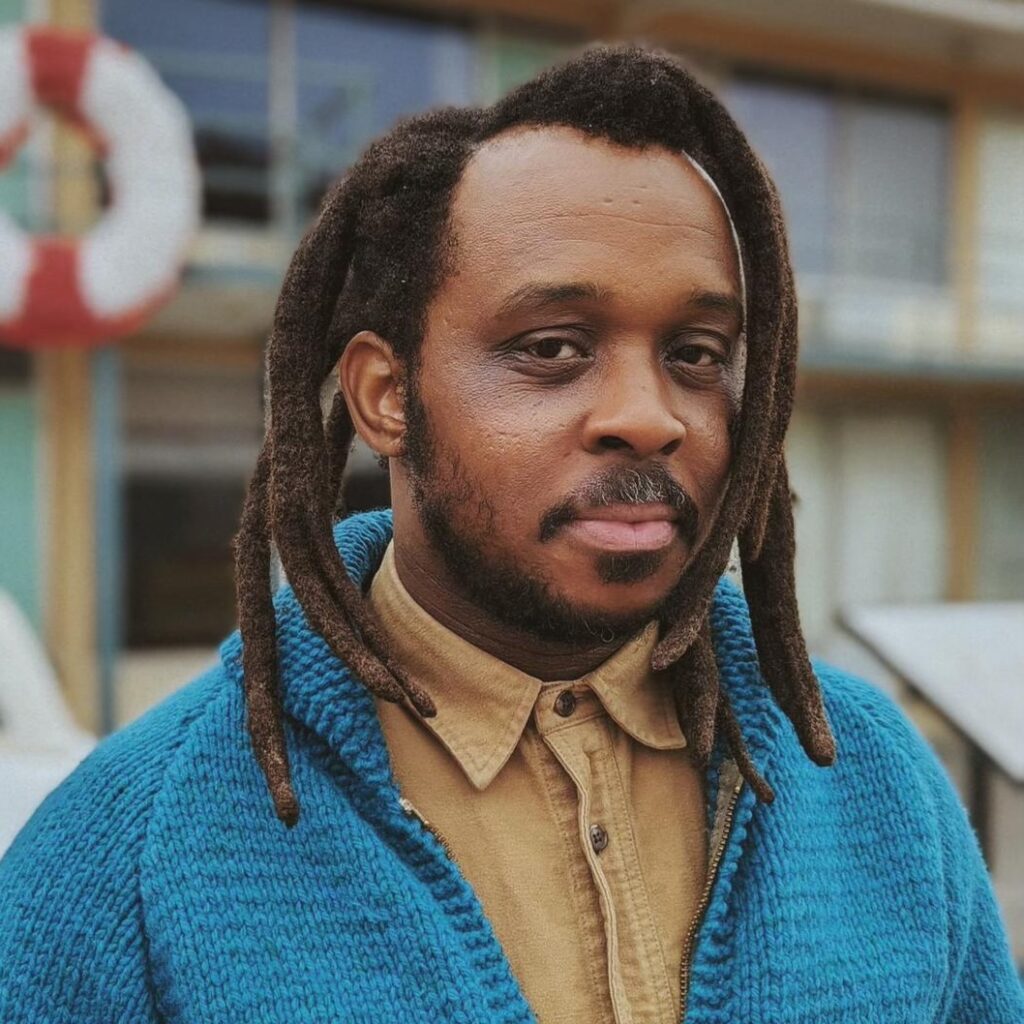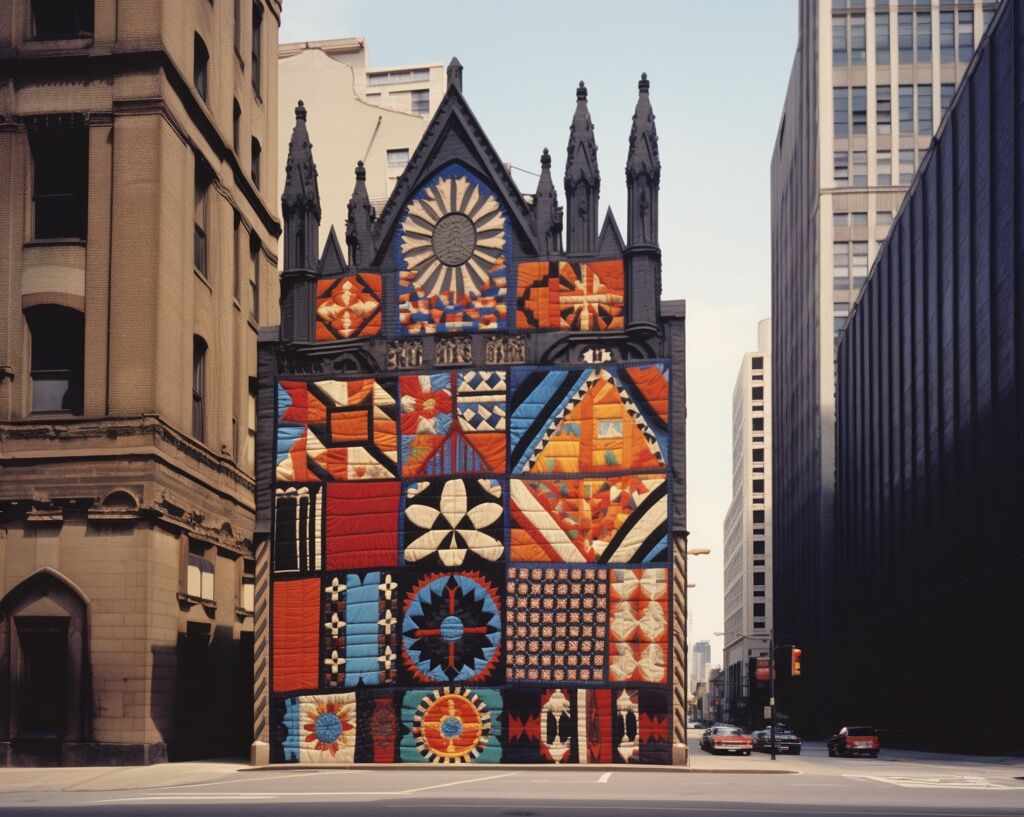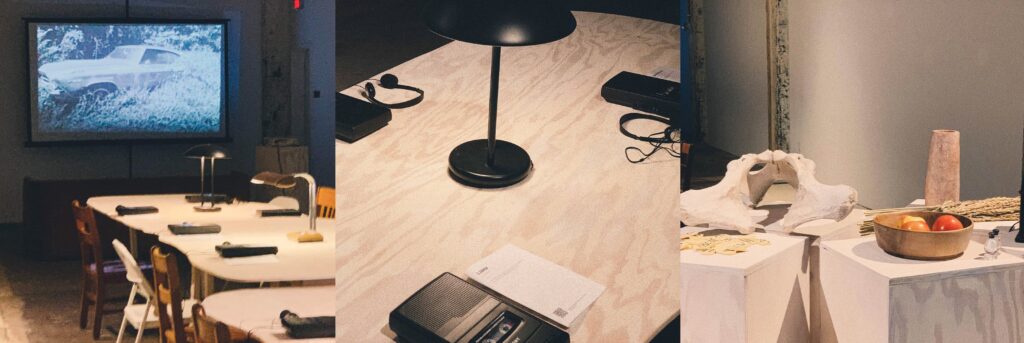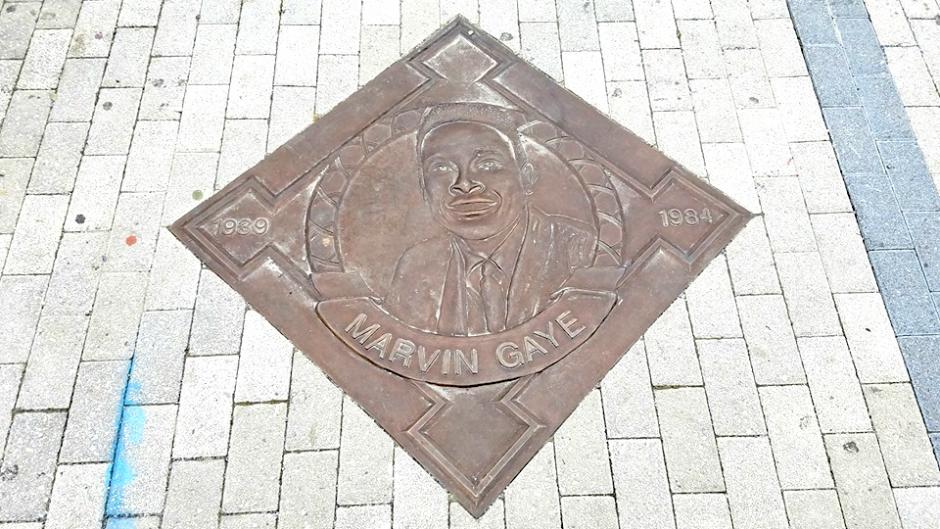Get a newsletter every other week from WPA
Join Our Mailing List
For WPA’s August newsletter, Nathalie von Veh talked to Curry J. Hackett, one of WPA’s two Summer R&D Artists-in-Residence about his research and art practice. Curry will be presenting the findings of his research in a public program as part of our Fall 2025 Season. His research will also seed a foundation for our new digital archive, launching in the Spring.
Nathalie von Veh: You have a vast multidisciplinary practice. Tell me about your practice — what have you been working on and thinking about recently?
Curry J. Hackett: So for the last, nearly a decade, I’ve been working primarily in the public realm, via my practice Wayside Studio. Wayside is in itself an invitation to look at under-recognized cultural narratives and invent strategies to visualize and amplify those narratives such that they’re easily understood by the public. Typically that looks like city-commissioned public art. I would say that my big break was the Howard Theater project—a $400,000 placemaking project in Shaw along 7th and T Streets. We put that on the ground in 2018. More recently, I’ve been thinking about what I’ve been calling cultural use cases for artificial intelligence. I’ve been using AI tools like Midjourney to imagine Black landscapes that are rooted in the aesthetics and the histories of the rural American South. I’ve been trying to understand the role of Blackness in shaping how we think about architecture, how we think about ecology, and landscape, and how we think about archival practice. That’s been a lot of fun.
I would say that a lot of designers put transdisciplinary on their bio, but this is the most trans—if not post—disciplinary that my practice has felt in these nine years of working in this way.
For instance, this is the first time the audience looking at my work is not architects, designers, and artists. It’s florists and professionals in hair care and beauty, and librarians and archivists. And yes, architects and designers, but I’m really delighted to be working with people that are outside of what tends to be an elite group of people that studied and are credentialed in architecture and design.

NvV: In 2021 you received a Wherewithal Grant to support your research on Black landscapes. Where has that project evolved since you received the grant?
CJH: The topic was an exploration of Black life, food plants, and life. That was before I settled on “Black landscape” as a way of summarizing it. The project was titled, Drylongso, which is a word that I discovered when I was in architecture school at Howard. My theory professor had just written a book titled Drylongso. I later learned of an earlier book by the Black anthropologist John Langston Gwaltney titled Drylongso: A Self-Portrait of Black America. This is a Gullah-derived word that means same-old, ordinary, or everyday. In the book, Gwaltney interviews more than 50 working class Black Americans trying to understand what their life was like. Cauleen Smith also has a movie of the same name based in Oakland. I’m taking inspiration from all of those to try to invent ways of documenting, visualizing, and narrating stories about Black life, at the scale of everyday, in the Black American South. This inquiry ultimately stems from my own upbringing in rural Southern Virginia, and this research project was one of the first times that I was more emphatically inserting myself into the work.
My mom’s side of the family owns around 100 or so acres of farmland that we’ve owned since the 19th century. I won that grant at a time when I was beginning to understand landscapes like my family’s as a legitimate site of study. Since then I’ve been working on a much broader project about what it means to study Black landscapes from that experience, and from the stories from that land. Drylongso continues to be an evergreen thing. I’ve applied that framework for projects and gotten funding and recognition from the Journal of Architectural Education and I won a Graham Foundation grant last summer which used the same title. The flagship image for that proposal was some paper that I made out of collard greens during my studies at the Harvard Graduate School of Design.
When I received the Wherewithal grant it was the first time that I thought about questions like: how many ways do I tell these different stories? How many ways can I go about discovering these different stories? As I said during my Wherewithal research presentation, it’s a question of how to research these topics. It’s become a mindset and a way of encountering various projects over the last few years.

NvV: What are you researching while in virtual residence with WPA this summer, and what are some highlights that have stood out to you thus far?
CJH: It’s come full circle because it’s in dialogue or obviously inspired by the initial Wherewithal work. I’m continuing to think about how to tell Black stories, stories of Black landscapes, and more specifically within the DC art scene over the last few decades. I’m looking to WPA’s archive as a way of understanding the stories that Black artists are telling themselves and their communities about the role of art in Black history and culture. I’ve been really enjoying going through the titles of the archive, the wide range of topics. I get the sense that the artists of that time were saying: “We’re talking about real things right now. We’re talking racial dynamics in the city or we’re talking about Afro Latino identity in the city.” Many of their topics feel very relevant to current issues.
On the other hand, there’s some really lofty topics like the Aesthetics of Blues [The Blues Aesthetic, WPA 1990], which sounds like it could be an ethnomusicology class at Howard University. I’m curious to see within just the titles of the programming that range, the range of the outcomes and the documentation. Some of them might only have an article that got written up in The Post. Others might have a more extensive catalog. I’m interested in exploring that range.
A highlight has been just seeing a few familiar names to me, namely Simmie Knox and Sam Gilliam. I didn’t know that Sam Gilliam had such a strong connection to DC—maybe that’s my fault, but I was delighted to see that he had such a decades-long connection to shaping the DC art scene over the years.
I’m also interested to see how the art scene spilled out into other venues or other communities, like the jazz scene or the federal Government. WPA was founded in 1975, so a few years after DC’s home rule law, and I believe 1975 was the height of the Black population in DC—I think its peak was 78% of the city. So it was clear that in those early years, race dynamics and issues of governance and identity were foregrounded within the imagination of the art community at that time. I’m excited to see what other communities and spaces around town were implicated.

NvV: You have a big upcoming show at the Cooper Hewitt, Smithsonian Design Museum, can you tell me a little bit about that and what people can expect?
CJH: Yeah, I’m participating in the Smithsonian Design Triennial, which will be at the Cooper Hewitt, Smithsonian Design Museum. It’s the first time that this triennial has been co-curated with another Smithsonian Museum—they’re working with the African-American Museum in DC. We have Michelle Wilkinson on the curatorial team and the theme of the show is “Making Home.”
NvV: Beautiful Curry, thank you so much for your time.
